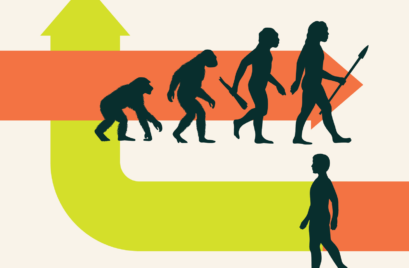
The race is on!
Upskilling, reskilling, and enhancing digital (and AI) literacy – the big movers are already committed to these essential shifts, as the world experiences a work and education revolution. Take Amazon, for example, and its $1.2 billion Upskilling 2025 initiative for both technical and non-technical roles. They’ve been focused on growing their own talent, offering days off for their employees to participate in learning programmes, and a Career Choice program which pays (upfront) 95% of tuition costs for courses in high-demand areas within Amazon. The organisation’s explicit commitment is to enhance the day-to-day lives of their associates through learning and development. It appears to be a smart investment.
A consensus of the many statistics available about the projected impact of AI technologies, tells us that at least half of all employees will need upskilling and reskilling in order to be able to do their jobs in the next few years. Yet, data from 2020 suggests that only 2 in 5 adults participate in lifelong learning. This is not enough to meet the burgeoning demands of Industry 4.0.
So, which are the most essential future skills, and how do we turn this skills deficit around?
Which Skills are In Demand?
According to the World Economic Forum’s predictions, we can see a clear signalling of the need for adaptive thinking and learning skills such as:
- Analytical thinking and innovation
- Active learning and learning strategies
- Complex problem-solving
- Creativity, originality, and initiative
- Leadership and social influence
Their estimation is supported by an even broader sample of 13 future skills studies collated in 2024, which arranges in-demand skills profiles into:
- Digital Competence including digital communication, digital and data literacy and digital learning
- System Competence including problem solving skills, process understanding, and willingness to adapt
- Initiative and Performance Competence including perseverance, enthusiasm/motivation, and personal initiative
Upskilling/reskilling are ways to prepare the workforce to meet these needs, and necessitates a strong commitment to continuous in-house learning, such as Amazon has demonstrated. But this alone will not be enough. New learning pathways must be reflected in our higher education curriculums, so that the knowledge and skills are developed before individuals reach the job market.
However, there is a sense that universities have been slow to adapt their curriculums to align with relevant future skills, putting even more pressure on workplace training. We are, though, seeing a definite trend to greater self-organised learning and a blend of formal and informal education. Perhaps this will increase the numbers of self-actualised life-long learners.
Emerging learning technologies will also have a direct bearing on becoming more adept at autonomous learning at earlier ages.
Emerging Technologies
In the higher education and the workforce learning spaces, it is difficult to exactly predict which specific technologies will take hold and which will lose traction. Virtual reality (VR), for instance, has taken a long time to become an economically viable option and may well be overtaken by Smart Glasses.
Whichever platforms emerge as the ed-tech winners, the current movement is towards using the following groups of technologies:
- Immersive learning – this means active, multi-sensory and experiential learning styles
- Highly personalised digital learning – bespoke, individualised, and iterative
- Intelligent tutoring – for example, systems supported by AI and Machine Learning such as predictive analytics systems that can schedule learner interventions based on data analysis
- Location-based intelligence technology – this can be adapted to suit the nature of the workplace needs e.g., workplace engagement and learning prompts and tracking resources
Industries Set for Growth
Any discussion about workforce learning, upskilling and reskilling, should also encompass the sectors in which the highest growth is likely to occur, giving us a glimpse into what will be the most coveted skill sets. Predictions for this include:
Technology:
Cybersecurity – according to Forbes, the United States Bureau of Labour Statistics believes that jobs opportunities will grow 32% by 2032. By comparison, the average job growth rate for all US jobs is only 4%.
Data Analytics – similarly the job outlook for data scientists in the next decade has been estimated at 36%.
Industries:
Green Industry– this includes jobs that cannot be performed without knowledge of green skills in fields such as engineering, construction, marketing, banking, manufacturing, infrastructure. From 2023 – 2024 the demand for green talent grew twice as quickly as supply (demand -11.6% and supply – 5.6%). By 2050, it’s predicted that the world will have only half of the green talent that will be needed.
Healthcare and Social Assistance/Welfare – over the next decade this will be the industry with the highest growth rate, “driven by both the aging population and a higher prevalence of chronic conditions, such as heart disease, cancer, and diabetes.”
Takeaways
We are already in an era marked by various skills shortages, and this is set to escalate. So here are some key takeaways for leaders:
- Invest in reskilling/upskilling – in-house learning is the answer to talent needs and retention
- Tack your strategic learning direction – think internal, personalised, and autonomous
- Skills not knowledge – it’s about how we think, not what we “know”
As the future unfolds, it’s clear that the idea that education and learning is largely synonymous with secondary school and young students, is an outdated myth. Lifelong learning is really the only answer to managing the future of work and the financial, social, and mental health of the world’s workforces.







